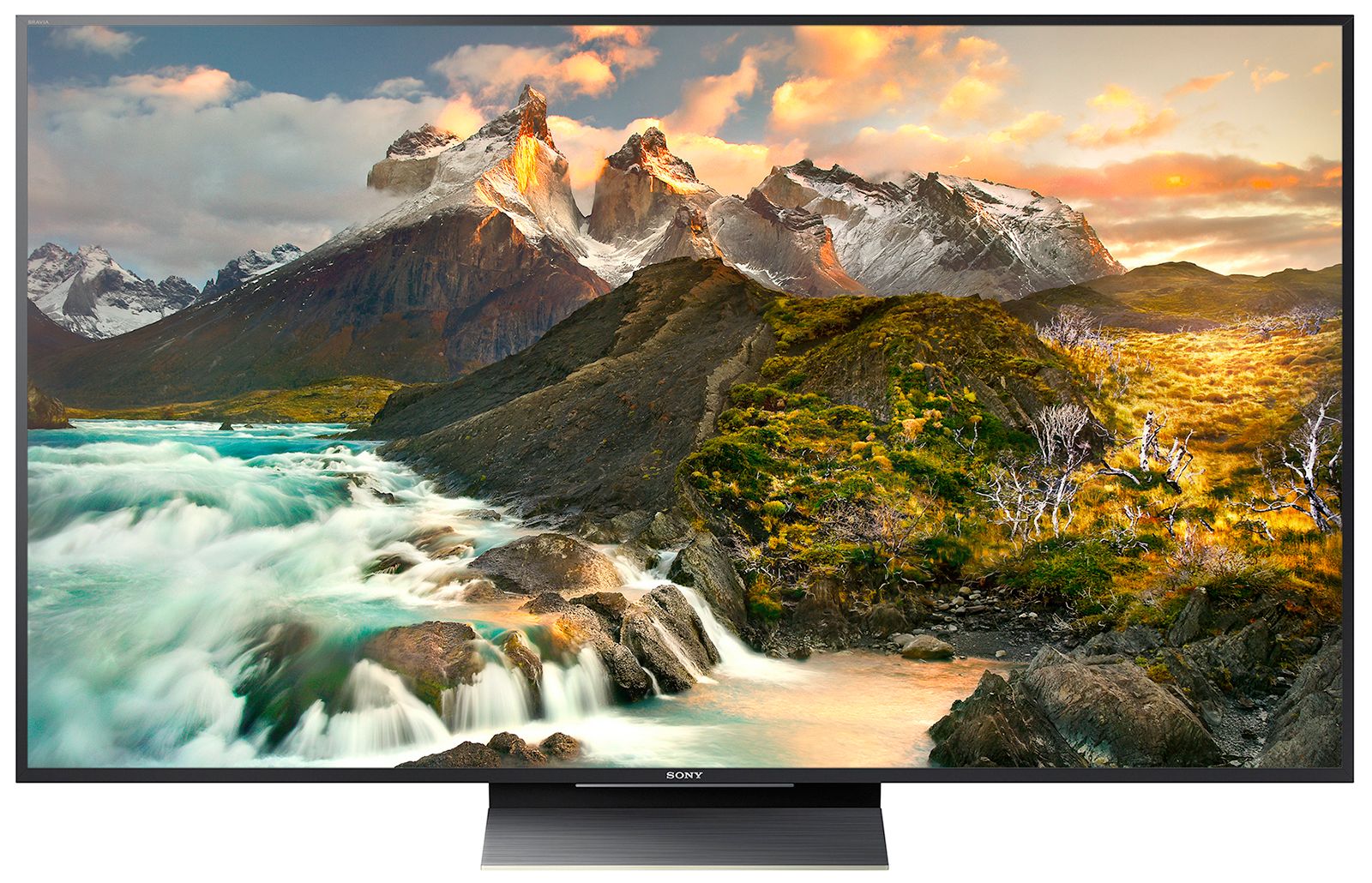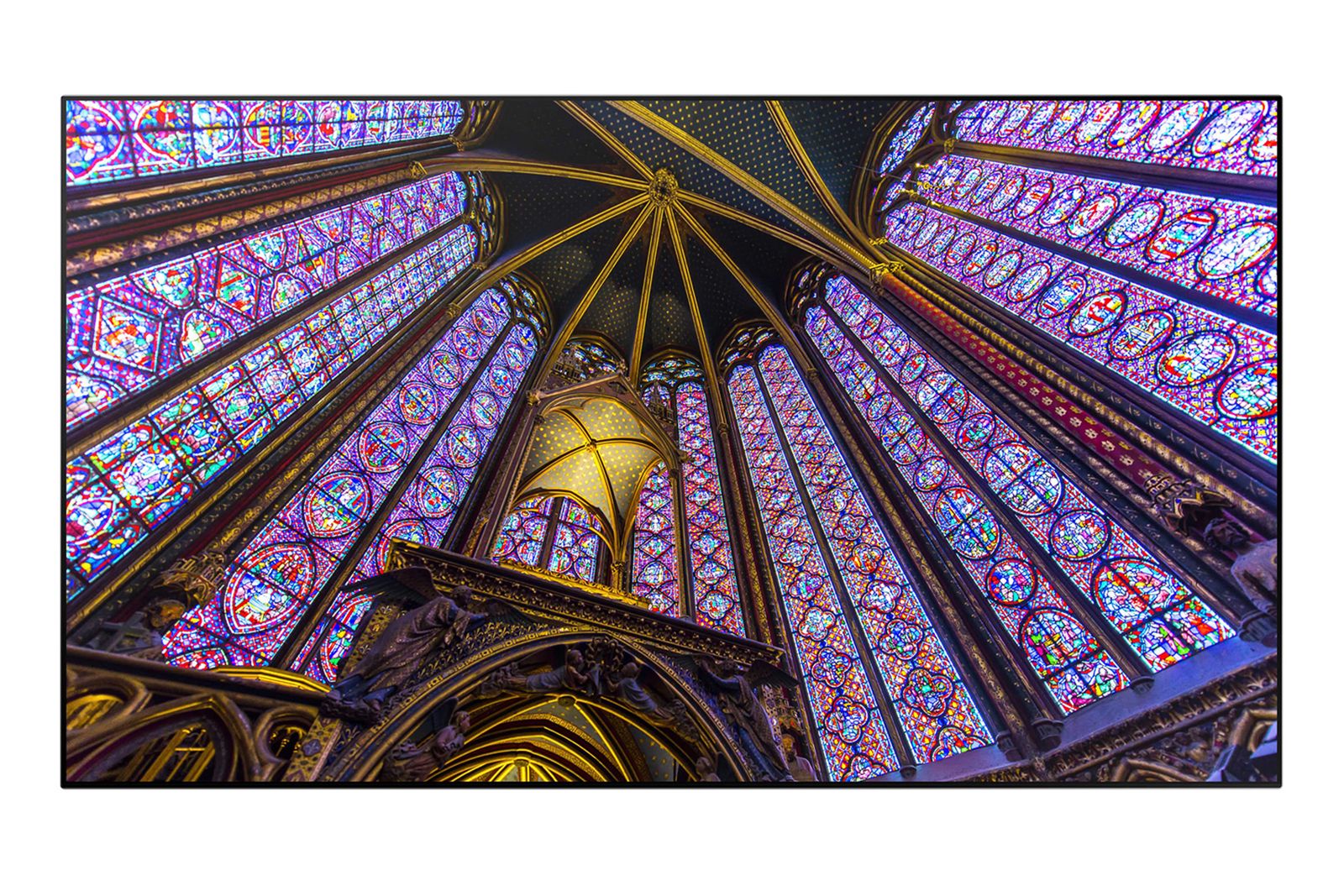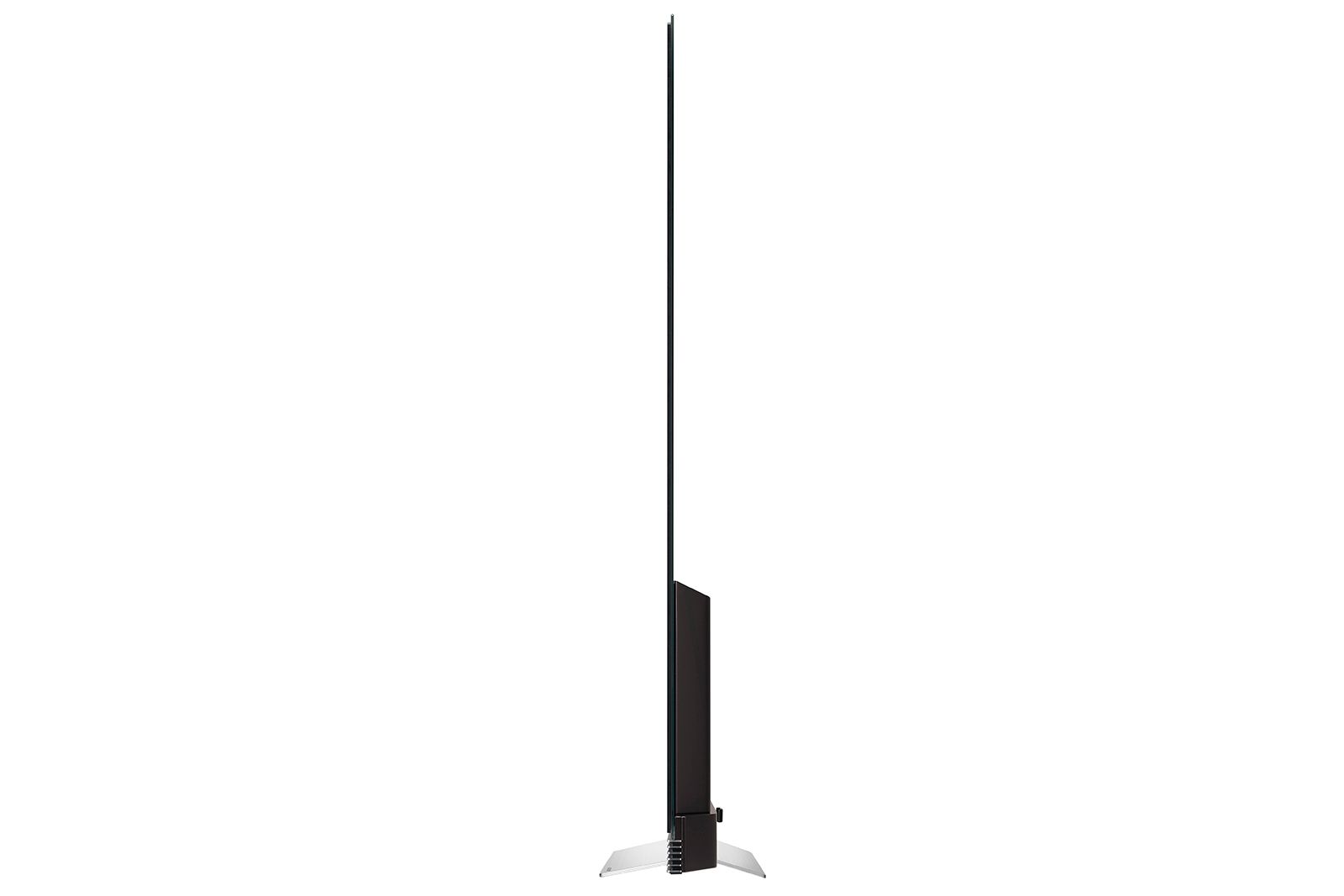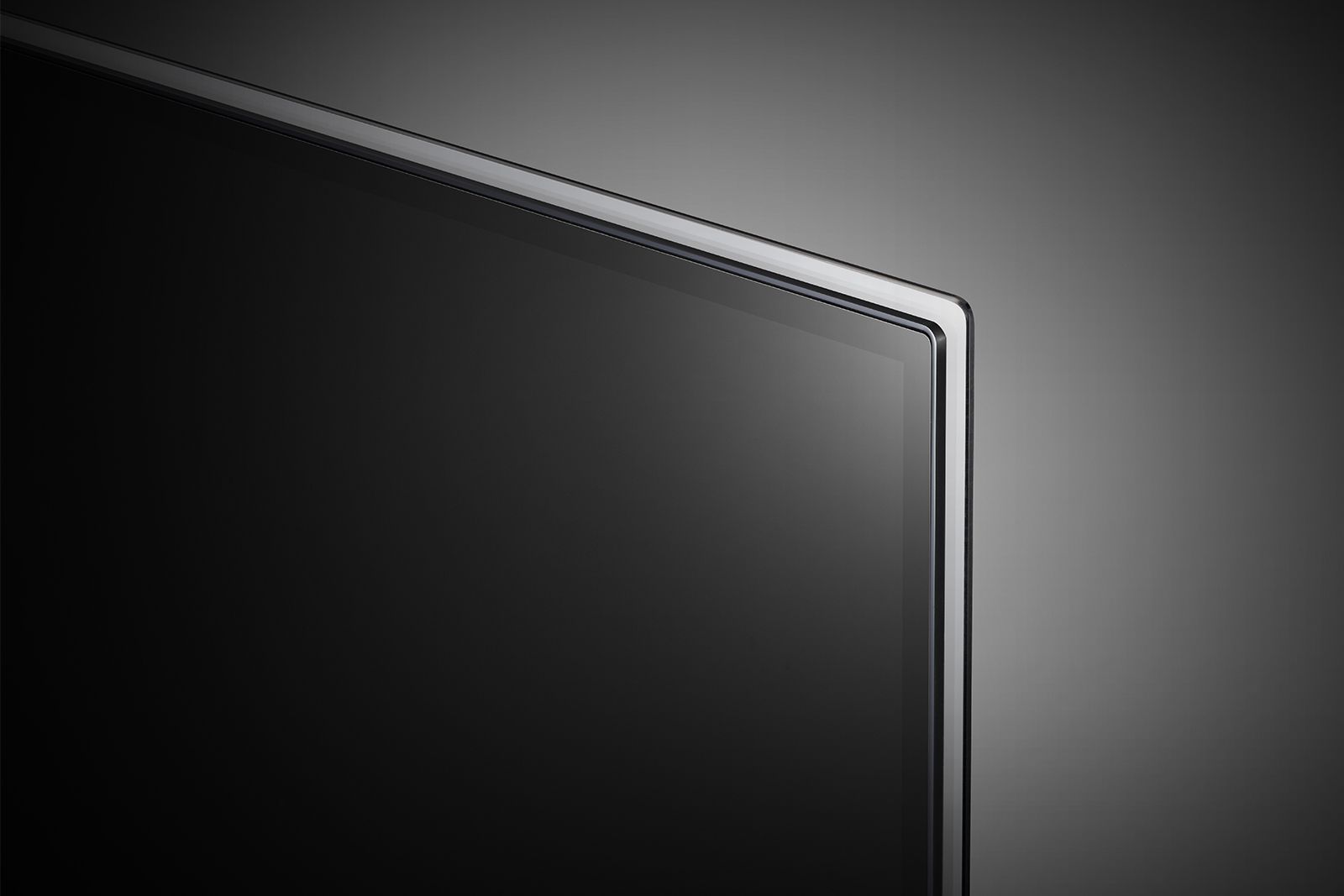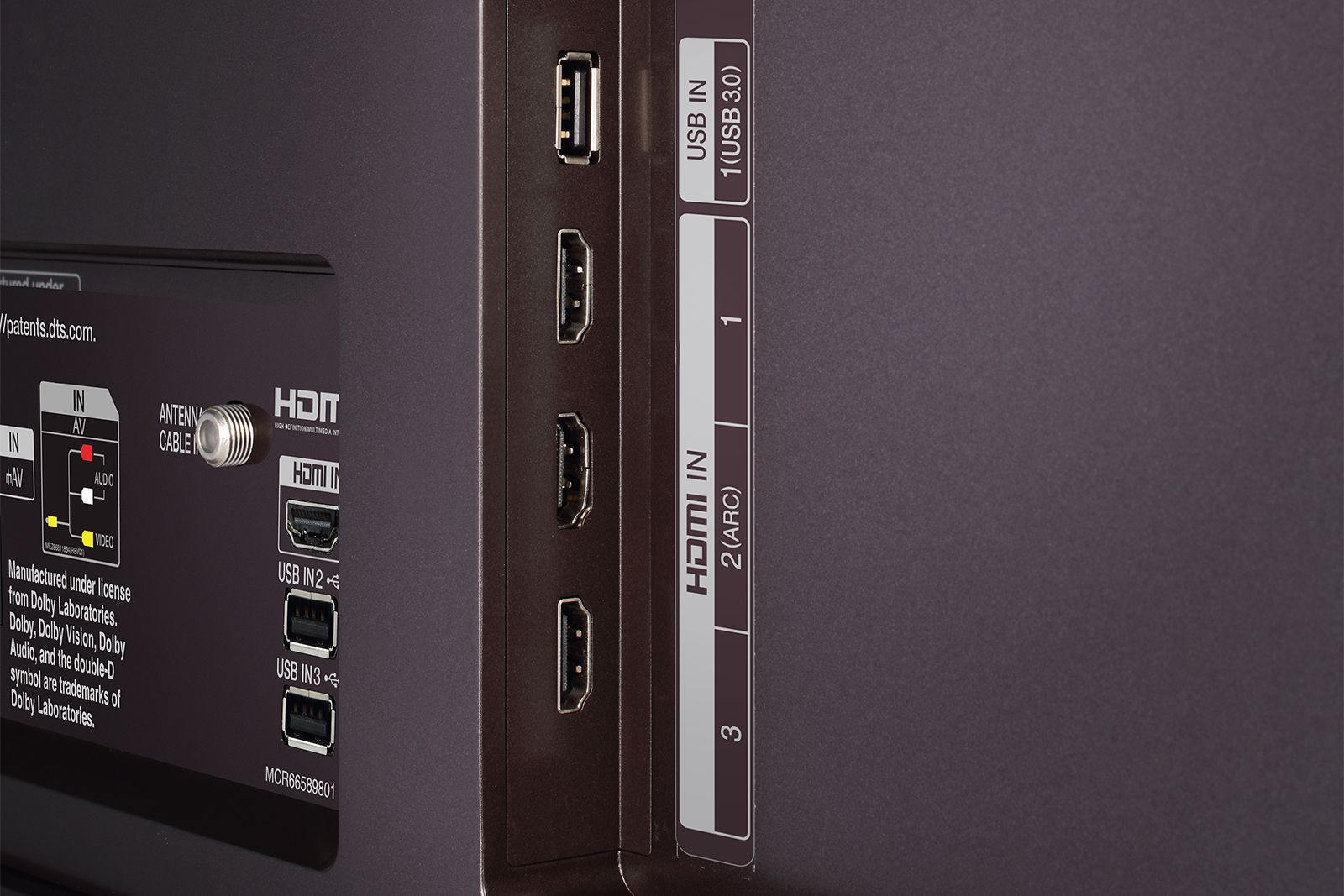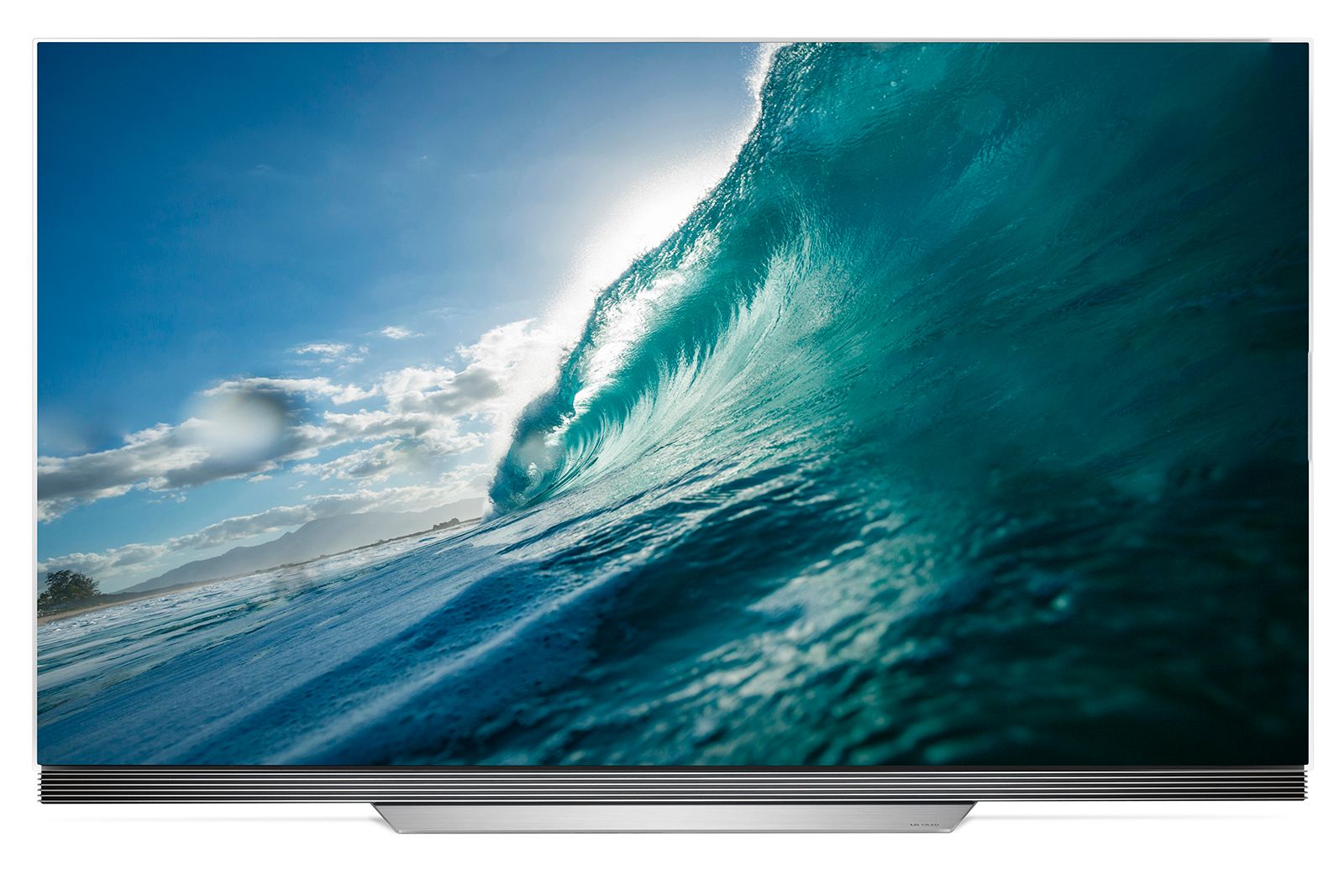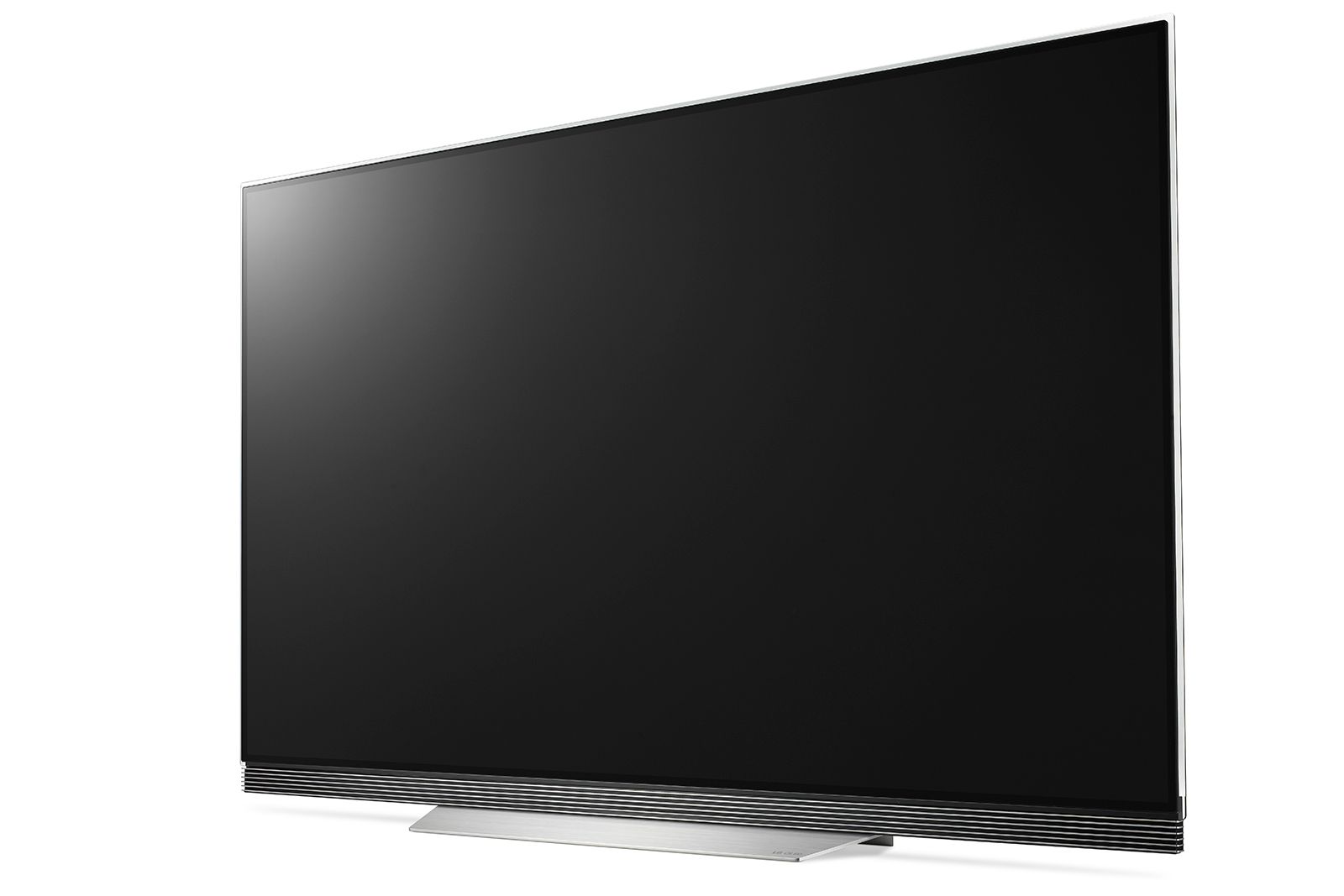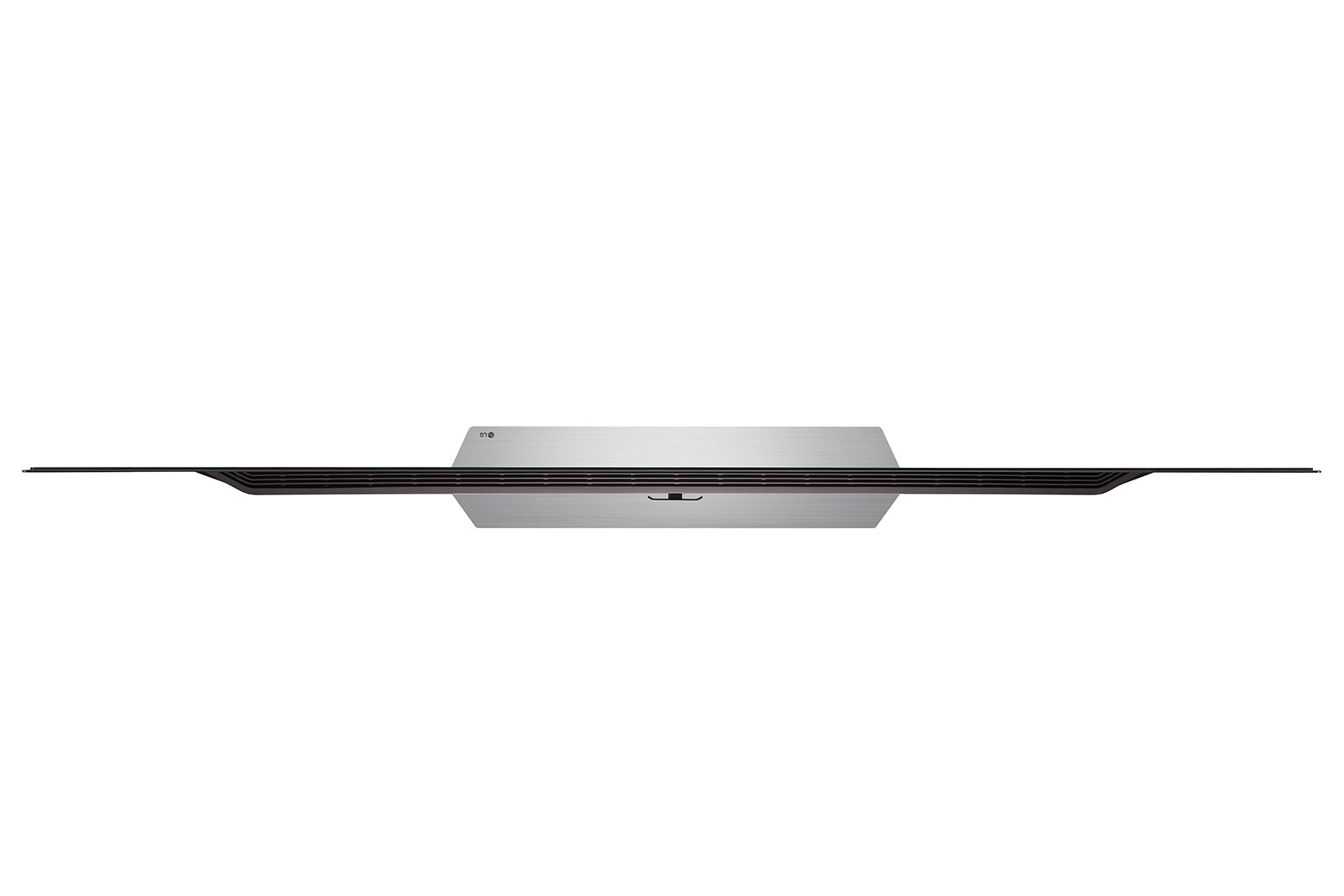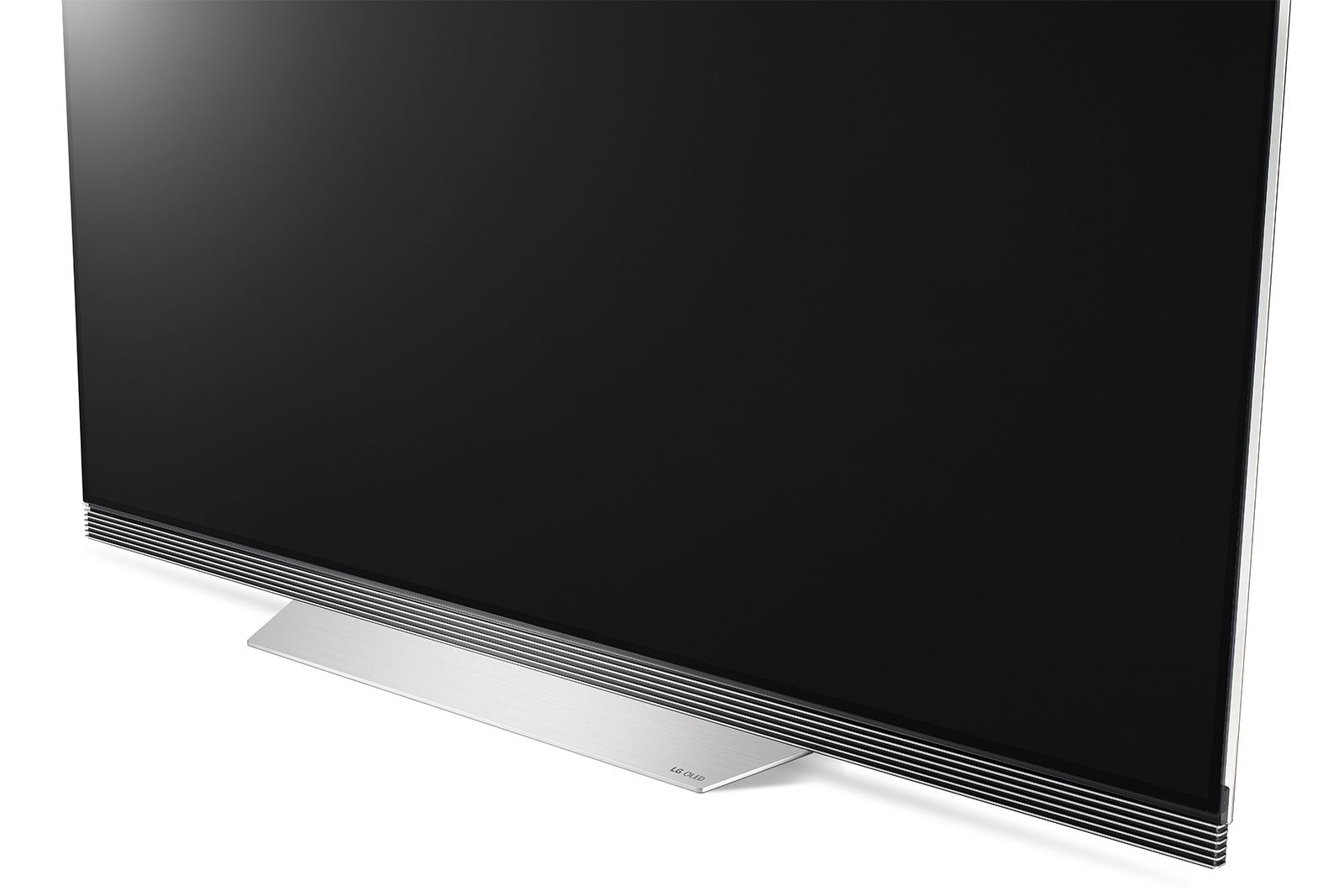It's starting to look as if 2017 will be the year that OLED TV technology really hits the big time.
Our quick take
LG's OLED TVs have been very good for years now. With the OLED65E7, however, LG has taken its beloved screen technology to a whole new level, finally proving that it can do high dynamic range (HDR) as well as standard dynamic range (SDR) not just convincingly, but superbly.
Couple this new level of picture prowess with surprisingly powerful built-in audio and a genuinely jaw-dropping design, and the OLED65E7 is uncomfortably close to being irresistible. Its £4,700 price tag might make you think twice, though.
Alternatives to consider
Sony KD-65ZD9
- £3,299
Sony's ZD9 again uses LCD technology to push the brightness and colour volume aspect of HDR playback. An unprecedentedly accurate backlight system means it backs this dynamism up with less backlight clouding than most LCD TVs, too, and it's recently received a big price cut.
Read the full article: Sony ZD9 review
Samsung QE65Q9F
- £4,900
The flagship TV from Samsung's new QLED range combines unprecedented brightness and colour range to deliver the most spectacular HDR images yet that hold up to viewing in ambient light almost spookily well. Dark room viewing can reveal some backlight clouding, though.
First published July 2017.
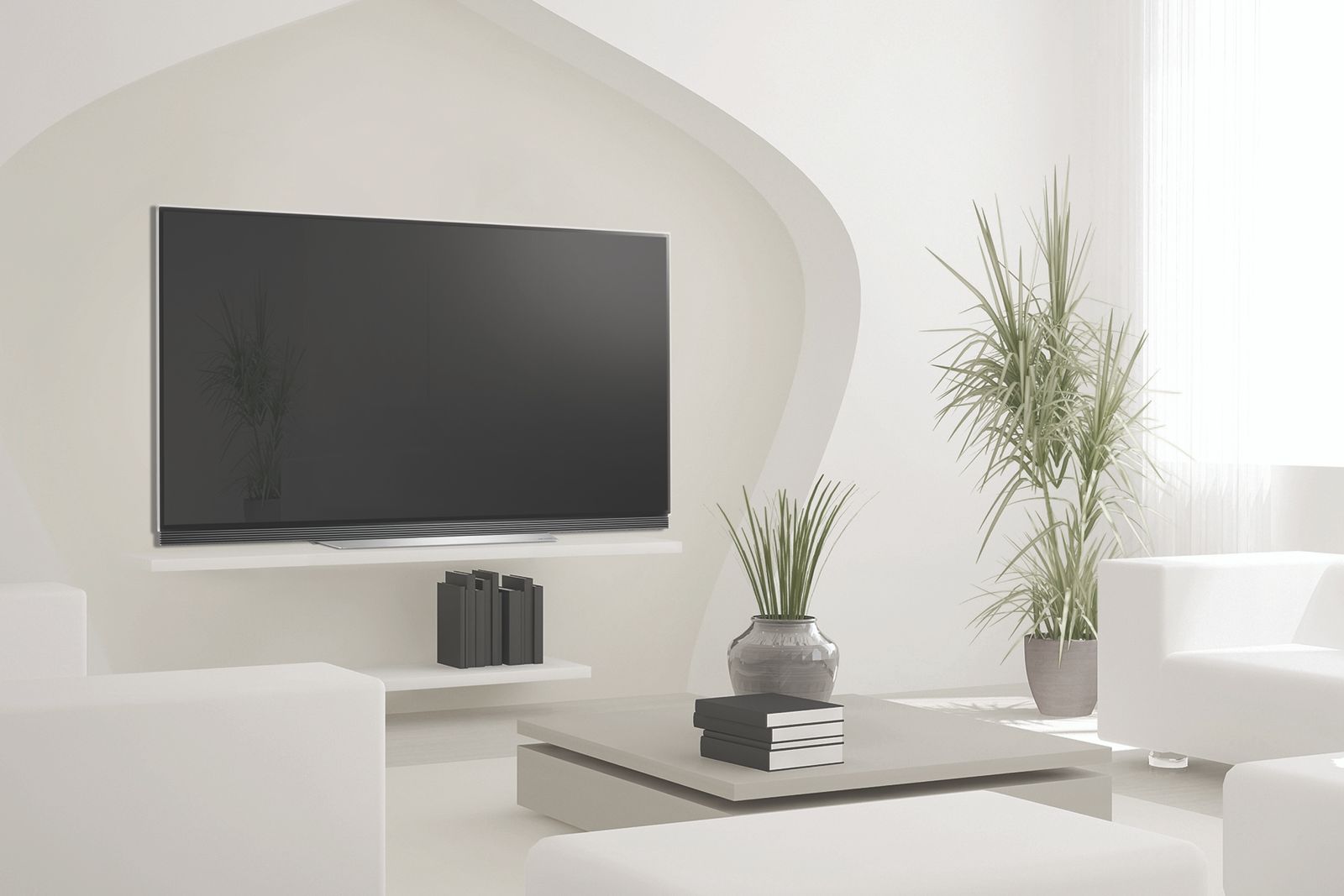
LG OLED E7 - 4.5 / 5
| FOR | AGAINST |
|---|---|
|
|
LG OLED E7
OLED panels have started to be used by a growing number of big-name TV brands, rather than just LG. Sets such as LG's incredibly thin and flexible Wallpaper TV and Sony's Acoustic Surface A1s have pushed OLED design to places LCD surely can never go. And perhaps most important of all, OLED prices have started to look more and more competitive.
The LG OLED65E7 perfectly exemplifies just why OLED has suddenly become more of a contender than ever before, combining as it does almost all of OLED's latest charms into one stunning package.
Picture on glass design
- 55, 65-inch sizes
- 4x HDMI in
- 3x USB multimedia port
- LAN and Wi-Fi
- Optical digital audio output
The OLED65E7 is LG's latest riff on the "Picture On Glass" design introduced with last year's E6 series. This sees the OLED film stuck directly onto a sheet of glass to deliver an incredibly thin, ridiculously gorgeous but also startlingly robust screen that enhances any room it sits in. Just be prepared to lose a few friends; jealousy is a terrible thing after all.
The need to fit in prosaic but necessary electrical stuff such as processors, panel drivers, a power supply and speakers means the LG E7 can't retain its wafer thinness over the entirety of its back panel. But it still makes the point in big capital letters that thinness this extreme is something rival LCD technology cannot do.
The frame around the OLED65E7 is exceptionally trim across three of its sides, too. The only exception is the bottom edge, from which hangs a couple of inches of built-in, silver-fronted soundbar.
If you've already got a separate audio system you might decry this bulk-adding addition to the OLED65E7's otherwise super-svelte frame. As will become clear later, though, it performs well enough to more than justify its presence. And in any case, it's slightly smaller and more gracefully integrated into the design than the soundbar built into last year's E6 range. Plus, if you want actual wafer thin then the W7 is the route to go down.
LG E7 OLED picture features
- HDR Support: HDR10, Dolby Vision, HLG, Technicolor
- Processing engine: LG's proprietary engine
- Trumotion motion processing and a new Active HDR for improving HDR10 playback
As ever with an OLED TV, the OLED65E7's single biggest attraction is the ability of every pixel in its 4K screen to produce its own light and colour. There's no shared backlight like you get with LCD TVs, thus there's no need for any pixel to be compromised by the brightness of its neighbours. This should result in extreme contrast and a dearth of the sort of backlight clouding and striping problems that plague LCD screens.
LG has managed to eke out around 25 per cent more brightness from its 2017 OLED panels than we got in 2016, which could prove crucial when it comes to delivering brightness-fuelled high dynamic range (HDR) content.
LG also claims to have improved its management of "just above black" light levels to reduce noise and black level instability, and has introduced a new processing engine for HDR10 content - which is the industry HDR standard, FYI - that adds a stream of extra scene-by-scene picture information to help the TV deliver better results.
OLED's self-emissive approach also means you can watch it from a much wider viewing angle than current LCD technology without either the colour and contrast reducing.
With Dolby Vision now starting to appear on a growing number of Ultra HD Blu-rays and Netflix/Amazon streams, LG's support for Dolby's premium HDR format is really starting to make sense. Especially since - at least where Ultra HD Blu-ray is concerned - Dolby Vision really does seem to transform picture quality.
LG E7 smart features
- Smart systems supported: webOS, Freeview Play
While LG has added one or two small new features to its well-established webOS platform, its approach for the most part continues to be a case of "if it ain't broke, don't fix it".
The webOS platform still shows other so-called smart platforms how it's done with its ultra-simple, economical, easy-to-customise and effortlessly slick onscreen menus. Content levels continue to impress, too, with highlights including Netflix and Amazon in 4K HDR, plus Now TV and all four of the UK's main terrestrial TV catch-up platforms also being available.
Since the BBC, ITV, Channel 4 and Channel 5 catch-up services are presented in an attractive Freeview Play wrapper, you can access their content via an electronic programme guide (EPG) that lets you scroll back in time seven days, as well as forward to pre-plan.
The new features mentioned earlier include support for 360 VR videos that you can navigate round using the TV's "magic" point and click remote control, an improved magnification function for zooming in on parts of the picture, and the ability to assign different content sources to the remote controls number buttons.
LG E7 picture quality and performance
OLED technology has always been capable of delivering the wow factor. With the OLED65E7, though, the wowing shifts from some of the time to pretty much all of the time.
Playing a big part in this step up in LG's OLED picture prowess is the extra brightness LG has found this year. This transforms the comparatively dull and sometimes unbalanced HDR pictures of 2016's OLED models into something much more exciting, immersive and consistently dynamic to watch.
The brightest areas of HDR now look like real HDR peaks, with a much more real-world intensity behind them, and you're much less likely to see silhouetting, whereby relatively dark parts of a mixed-brightness HDR image can look too shadowy due to a lack of subtle light detail.
This improved brightness is given extra potency because it's appearing on an OLED TV, and so the brightest colours and whites can sit literally one pixel away from the deepest, darkest black colours without a hint of light pollution or compromise. This has the effect of making OLED's brightness look higher than it actually is - at least in a relatively low-lit room environment.
Better light control
While it is possible for deep blacks to sit right alongside peak whites with OLED technology, the impact of this star attraction has been reduced on previous LG sets by difficulties in controlling light at the point where the image goes from black (where essentially an OLED pixel is inactive) to marginally brighter than black. Issues connected with this have been blocking or fizzing noise in dark background areas, and sudden reductions in the image's usually terrific black level response.
With the OLED65E7, though, the likelihood of these sorts of problems cropping up have been greatly reduced. This means you're much less likely to have your immersion in what you're watching broken by sudden reminders of the limitations of the TV technology you're watching.
That said, not all of OLED's past noise issues have been removed: they still show up occasionally, and the higher the brightness setting you're using, the more likely you are to see them.
This presents you with a slightly frustrating choice on the OLED65E7, as the only way to remove pretty much all traces of near-black noise is to set the brightness slightly lower than you would ideally like to for really punchy HDR. For many users this will boil down to a choice between the punchier but noisier Standard picture preset, and the less dynamic but less noisy Cinema preset. Attempting to tweak around these presets didn't manage to come up with any magical setting combination that completely fixed the problem.
To be clear, for the vast majority of the time the OLED65E7's pictures will look glorious whichever set-up preference you opt for. But it's one area where LG could maybe still improve things that bit more with its next OLED generation.
Amazing black levels
Now let's get back to the good stuff. Joining the improved brightness are stunningly deep, natural black levels that extend far below anything current LCD TVs can do. You appreciate these even more now there's less chance of noise or sudden brightness shifts interfering with them.
Good black levels usually contribute to a strong colour performance. So the OLED65E7's outstanding black levels lead to mostly outstanding colours. Tones across the board look gorgeously rich and full-bodied, yet there also seems to be more tonal subtlety on show than LG has managed on previous OLED generations.
Very occasionally a low-lit HDR skin tone or two can look a bit plasticky; take, for instance, the actors' faces during Moses' meeting with Nun in his dark hut in Chapter 7 of the Exodus: Gods & Kings 4K Blu-ray. It's also important to point out that even the extra brightness LG has squeezed from its OLED panels this year isn't enough to deliver the same sort of colour volumes possible with much brighter LCD TVs.
Brightness isn't everything
However, those more real-world colour volumes possible with LCD TVs - such as Samsung's new QLED TVs - come with black level strings attached. You can't get so much brightness and colour punch from an LCD lighting system without black levels taking a hit. As a result, the OLED65E7's colours often look more intense and rich during scenes that contain a mixture of bright and dark image content than they do on those brighter LCDs.
LG has also improved the sharpness of its pictures with both native 4K and upscaled HD content. Details look cleaner and more pronounced, and there's less noise in areas of fine detail.
There's more detail and subtle colour toning in the brightest parts of HDR pictures, too, which again helps make the OLED65E7's pictures more consistently immersive than those of LG's 2016 OLED models. Oddly, however, the Active HDR option LG has introduced this year seems to reduce this peak light detailing, and so is best left switched off.
Motion could look a little cleaner without motion processing in play, and the motion processing could suffer a touch less with unwanted processing side effects. But as with any negatives raised against the OLED65E7, this one is again pretty puny in the context of all the stuff the picture gets so beautifully right.
The OLED E7 wraps up a truly outstanding picture performance by providing an almost infinite viewing angle, and delivering standard dynamic range (SDR) images absolutely immaculately.
LG OLED E7 sound quality
- Speaker configuration: 4.2-channel soundbar with 60W of power
- Dolby Atmos support
As if attaching a 4.2-channel soundbar to the bottom of the OLED65E7's screen wasn't already nifty enough, LG has also equipped the set with Dolby Atmos decoding.
Dolby Atmos is a so-called object based sound system designed to deliver greater audio precision that also adds height channel effects to the usual horizontal surround sound experience.
Clearly questions have to be asked about how a single built-in soundbar can deliver a convincing Atmos experience, and it must be said that the OLED65E7 doesn't deliver any real sense of rear-channel audio information. Also, the height audio information sounds more like different levels in a sonic wall in front of you rather than something that's actually appearing to come from above your head as it should. And bass levels from the integrated soundbar are no match for a separate subwoofer.
Having said all that, while the OLED65E7 only provides a diluted Atmos experience, it does actually sound remarkably good for a speaker system built into a super-skinny TV. The mid-range sounds open, clean, dynamic and detailed, providing enough breathing room to shift through a few gears during action scenes.
The soundbar also does a startlingly good job of making sure vocals always sound clear without losing their sense of contact in the mix, and delivers genuine vertical layers of sound that it's hard to believe it's all coming from such a small speaker under the TV.
Even bass levels are actually superior by integrated TV audio standards.
When the LG OLED models launched, they only supported Dolby Atmos from streamed sources, meaning that content was rather scarce. Following an update in October 2017, however, you can now take advantage of Atmos content from other sources, such as Blu-ray discs, where it is plentiful.
LG OLED E7
To recap
LG's OLED TVs have been very good for years now. With the OLED65E7, however, LG has taken its beloved screen technology to a whole new level, finally proving that it can do high dynamic range (HDR) as well as standard dynamic range (SDR) not just convincingly, but superbly.

